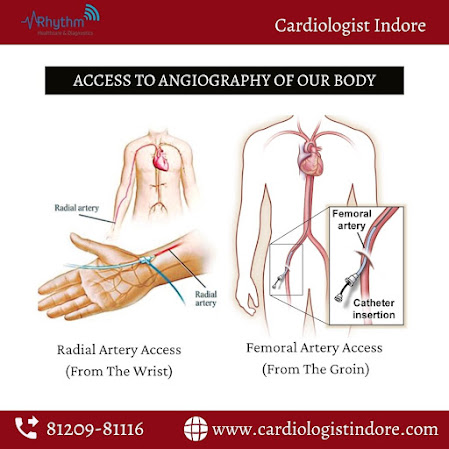What is Angiography and Why is it needed | Cardiologist Indore - Dr. Siddhant Jain
In this article, Dr. Siddhant Jain, Senior Interventional and Consultant Cardiologist will talk about angiography, what is angiography, why it is used, is angiography dangerous or not, and what are the charges for angiography.
What is Angiography and Why is it Needed?
Angiography is one of the tests that is used to look for blockages in the arteries of the heart where we can access it through a catheter and medicine is injected, then we do x-rays and after looking at that picture the doctor can know how much is the blockage.
If the blockage is more than it is treated with a stent, balloon, or sometimes bypass surgery, if the blockage is so much, It is not much that medical treatment alone is enough so to know this the test is known as angiography.
Is There Pain or Danger During Angiography?
There is no pain at all in angiography. Angiography is done with the help of a small needle. First, anesthesia is given with a small needle, from where the test needs to be done, a 2 mm wire reaches the heart, which the patient cannot feel, so the patient feels pain during angiography, That's wrong.
The patient should not have any fear about it. Angiography is a very safe test but still, it can cause problems for 1 in 1000 patients and if the patient has already had a heart attack or the patient is in a serious condition then there may be some complications during angiography but in a normal safe patient, Angiography is a very safe test.
What Are The Charges for Angiography?
In a city like Indore, it can range between 12k-15k, it takes around 8 hours a day, as the patient needs to take admission and do some blood tests, followed by angiography. The actual procedure takes 10-15 minutes but the patient has to wait in the hospital for a new minute.
Nowadays we do angiography through the radial artery through which we pass a thin wire called ambulatory angiography, in that the patient comes to the hospital, we get ready and do the test two hours after the patient can walk out of the hospital This test takes 4 hours to perform.
Use Of Angiography
The picture of the arteries is recorded by an X-ray machine and shown on a TV-like monitor. This test clearly shows the status of the blockage of the heart artery and the report is available immediately.
Angiography is performed in patients with Chest Pain, Angina, Heart Attack, Shortness of Breath, and Cardiovascular Risk Factors.
Dr. Siddhant Jain - Senior Interventional and Consultant Cardiologist
Dr. Siddhant Jain is doing Coronary Angiography by Radial Route (Wrist Artery) which is very convenient and safe for the patient and the patient can walk home within 2 hours of the procedure. In addition to coronary peripheral angiography can be performed radially as well as by a femoral route (groin artery).
Angiography is the gold standard test for diagnosing blockages in the heart arteries (blood vessels). A sheath is inserted into the artery of the wrist through a small needle and a 1.7 mm tube is passed through this sheath to the heart and through this tube, some contrast or dye is injected into the arteries of the heart.
For More Information Visit these Links:- https://www.cardiologistindore.com/ Or an Appointment Contact Us:- 81209-81116

.jpg)

Comments
Post a Comment